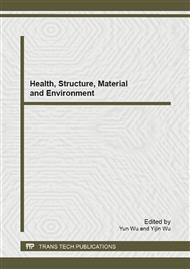[1]
Banat, I.M., Nigam, P., Singh, D., Marchant, R., 1996 Microbial decolorization of textile-dye-containing effluents: a review. Bioresource Technology 58, 217-227.
DOI: 10.1016/s0960-8524(96)00113-7
Google Scholar
[2]
Chung, K.T., Stevens, S.E., 1993. Degradation of azo dyes by environmental microorganisms and Helminths. Environmental Toxicology and Chemistry 12, 2121-2132.
DOI: 10.1002/etc.5620121120
Google Scholar
[3]
Cripps, C., Bumpus, J.A., Aust, S.D., 1990. Biodegradation of azo and heterocyclic dyes by Phanerochaete chrysosporium. Appl Environ Microbiol 56, 1114-1118.
DOI: 10.1128/aem.56.4.1114-1118.1990
Google Scholar
[4]
Fu Y, Viraraghavan T ., 2001. Fungal decolorization of dye wastewaters: a review. Bioresource Technology 79: 251-262.
DOI: 10.1016/s0960-8524(01)00028-1
Google Scholar
[5]
Gleen, J.K., Gold, M.H., 1983. Decolorization of several polymeric dyes by the lignin-degrading basidiomycete Phanerochaete chrysosporium. Appl Environ Microbiol 45, 1741-1747.
DOI: 10.1128/aem.45.6.1741-1747.1983
Google Scholar
[6]
Hong, J., Emori, H., Otaki, M., 2005. Photodecolorization of azo dyes by extracellular metabolites under fluorescent light and influence of operational parameters. Journal of Bioscience and Bioengineering 100, 192-196.
DOI: 10.1263/jbb.100.192
Google Scholar
[7]
Hong, J., Otaki, M., 2003. Effects of photocatalysis on biological decolorization reactor and biological activity of isolated photosynthetic bacteria. Journal of Bioscience and Bioengineering 96, 298-303.
DOI: 10.1016/s1389-1723(03)80197-4
Google Scholar
[8]
Levine, W., 1991. Metabolism of azodyes: implication for detoxification and activation. Drug Metab Res 23, 253-309.
Google Scholar
[9]
Lin, J., Zhang, X., Li, Z., Lei, L., 2009. Biodegradation of Reactive blue 13 in a two-stage anaerobic/aerobic fluidized beds system with a Pseudomonas sp. isolate. Bioresource Technology 101, 34-40.
DOI: 10.1016/j.biortech.2009.07.037
Google Scholar
[10]
Liu, S., Suflita, J.M., 1993. Ecology and evolution of microbial populations for bioremediation. Trends in Biotechnology 11, 344-352.
DOI: 10.1016/0167-7799(93)90157-5
Google Scholar
[11]
Pearce, C.I., Lloyd, J.R., Guthrie, J.T., 2003. The removal of colour from textile wastewater using whole bacterial cells: a review. Dyes and Pigments 58, 179-196.
DOI: 10.1016/s0143-7208(03)00064-0
Google Scholar
[12]
Song, Z., Zhou, J., Wang, J., Yan, B., Du, C., 2003. Decolorization of azo dyes by Rhodobacter sphaeroides. Biotechnology Letters 25, 1815-1818.
Google Scholar
[13]
Supaka, N., Juntongjin, K., Damronglerd, S., Delia, M.L., Strehaiano, P., 2004. Microbial decolorization of reactive azo dyes in a sequential anaerobic-aerobic system. Chemical Engineering Journal 99, 169-176.
DOI: 10.1016/j.cej.2003.09.010
Google Scholar
[14]
Wuhrmann, K., Mechsner, K, Kappeler, T., 1980. Investigation on rate deternining factors in the microbial reduction of azo dyes, European Journal of Applied Microbiology and Biotechnology 9, 325-335.
DOI: 10.1007/bf00508109
Google Scholar
[15]
Yan, B., Zhou, J., Wang, J., Du, C., Hou, H., Song, Z., Bao, Y., 2004. Expression and characteristics of the gene encoding azoreductase from Rhodobacter sphaeroides AS1. 1737. FEMS Microbiology Letters 236, 129-136.
DOI: 10.1111/j.1574-6968.2004.tb09638.x
Google Scholar


